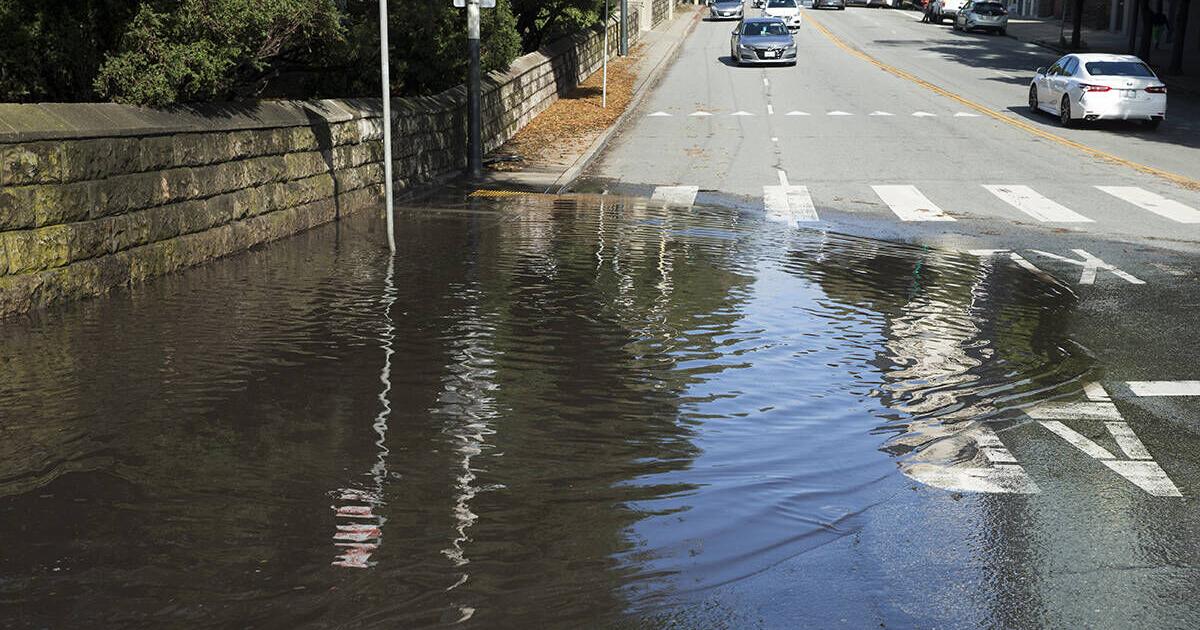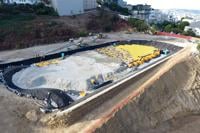After the storm: How San Francisco makes use of rainwater | Archives

Last Sunday — San Francisco’s October day on record — seven neighbors were spotted at the intersection of 31st Avenue and California Street. Brooms in hand, they were trying to sweep rainwater that flooded the intersection down the street and into storm drains.
They stopped the flooding, but didn’t save the water. That’s because, despite having some of the nation’s most ambitious policies on sustainability, San Francisco still loses most of its potentially reusable rain water down the drain.
It’s a problem. gov. Gavin Newsom recently issued a proclamation extending a statewide drought emergency, which gives the State Water Resources Control Board authority to ban wasteful water practices. On Monday, after the storms cleared, California’s two largest reservoirs were only 22% and 26% full. And while about four inches of rain fell in downtown San Francisco last weekend, the majority of it flowed into the sewers and out to sea.
“As the climate crisis worsens, there is no doubt that increased water reuse and recycling from all sources, including rainwater when it’s available, will be necessary for our survival,” Supervisor Rafael Mandelman, who has been particularly vocal about the issue, said in a statement.
Despite the amount of water wasted, San Francisco’s policies are ahead of most other cities in the state. Residents are reimbursed for rainwater cisterns installed on their property, large developments are required to install water recycling systems, and a stormwater collection project that will irrigate most of a new park in Russian Hill is underway. Since 2012, the San Francisco Public Utilities Commission has encouraged water reclamation, establishing a voluntary program to encourage large-scale water reuse systems by establishing clear guidelines for developers and establishing water quality standards.
In 2015, state Sen. Scott Wiener, a San Francisco supervisor at the time, authored legislation mandating the establishment of those water reuse systems in new developments over 250,000 square feet. Just last month, an ordinance authored by Mandelman expanded that requirement to new developments of 100,000 square feet or more. Mandelman’s office told The Examiner that the legislation “more than doubles” the amount of water reused.
There are several types of rainwater that can be reused, with varying degrees of filtration and treatment. Gray water is lightly contaminated water that has been used once and is now considered waste, like water that goes down the drain from a shower or after washing one’s hands. Stormwater is water from rainfall that drains off a land area or has crossed surfaces like roads and driveways. Rainwater, the cleanest of these types of reusable water, comes directly from the sky and at most slides off a non-contaminating surface, like a roof. This water can even become potable with basic filtration.
Harvesting that rain water, in its most basic form, is simple. Water must be funneled through clean gutters or PVC into a storage vessel, like a cistern. Then the vessel must be connected to a plumbing system with filtration, treatment and pressurization systems in place that are applicable to the water’s intended use. People collecting rainwater at home typically need only a basic filtration screen and a hose. Those with a green thumb can also make use of stormwater at home by reshaping gardens to funnel and divert water for irrigation.
“It’s just common sense,” says Laura Allen, who has written several manuals on household filtration systems and is a founding member of Greywater Action, which educates people on the topic. “People care about the environment, they care about the water, and they see this water coming down and know we should be utilizing it in the best way, but they don’t always know how.”
In commercial settings, the systems can become more complex, but follow the same model. Filtration systems often include multiple stages of treatment and disinfection, as well as pressurization so the water can be used for things such as flushing toilets. Developers and engineers working on these projects must complete applications with the PUC, the Department of Public Health, and, in some cases, a permit application with San Francisco Public Works. Application fees and engineering reports are also required.
In other words, the city’s regulations still come with a good bit of bureaucracy.
Sherwood Design Engineers, headquartered in San Francisco, is a leading firm on the West Coast taking on the challenge. His projects include restoring the banks and removing retaining walls around Strawberry Creek at the UC Berkeley campus. It also is behind the integrated water management plan for a highly-publicized, mixed-use community development in San Francisco’s India Basin.
Its renovations at Francisco Park are particularly noteworthy. It has built a world-class stormwater catchment system that will store 500,000 gallons of water and almost fully irrigate the park. In addition to the project’s immense size, it also has metaphorical value: the park itself was once a massive reservoir dating back to the 1850s that had been abandoned for nearly 80 years. The project reintroduced a useful water source.
Left: A rain capture system in Francisco Park in the Russian Hill area is being installed.
“At Francisco Park, we actually made use of a decommissioned drinking water reservoir,” said Amelia Luna, a senior project manager at Sherwood. “The City is leading the nation in promoting and passing regulations for onsite reuse of alternate water supplies like rainwater and stormwater,” she added.
Still, one of the most consequential ways to encourage rainwater reuse in San Francisco may be through boosting awareness around how to do it at home. In 2005, San Francisco made it legal to disconnect downspouts from the combined sewer system to direct rainwater to gardens or cisterns. The water can be used for outdoor irrigation, decorative fountains and car washes, for example.
“If everyone even had a rain barrel at their buildings, that would be a lot,” Allen said. “It’s about awareness and feeling connected to our water.”
Greywater Action lists dozens of resources on its website for setting up a home irrigation system, and leads workshops and presentations. SFPUC customers can be reimbursed for up to $100 spent on each of a property’s first two rain barrels, or up to $350 spent on a cistern holding up to 5,000 gallons. Interested residents must fill out an application on the SFPUC website.
According to the SFPUC, households that gather rainwater can collect 600 gallons of water for every 1,000 square feet of roof for every one inch of rain. On a day like Sunday, that means the average two- or three-bedroom residence in The City could have collected 2,400 gallons — enough for about 240 five-minute showers.
virwin@sfexaminer.com


